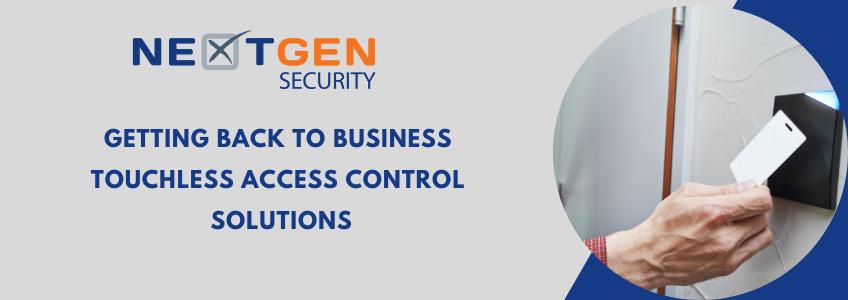While it’s fairly safe to say that everyone everywhere is feeling COVID-19 fatigued, the virus and ensuing pandemic ushered in some changes that are apparently here to stay. Preventing the spread of the virus leapt to the top of the leaderboard, as did the introduction of innovative solutions to help in the cause. From temperature screening scanners, to the advancement of artificial intelligence (AI) and analytics capabilities to assist with mask detection and social distancing requirements, technologies have earned their place as effective tools in the prevention arsenal.
So, too, have touchless access control solutions earned a solid standing in these COVID and post-COVID times. Touchless access solutions are eliminating the need to physically touch a surface such as doors and card readers to gain access to a premise.
Both mobile access credentialing and touchless access control solutions are ideal for reducing hand-to-door contact in high traffic public areas. They offer contactless, barrier-free and user-friendly access that assures secure entry, minimizes high frequency touchpoints and reduces the spread of germs.
Many mobile access solutions utilize a mobile-ready reader based on RFID technology that combines Bluetooth Low Energy (BLE) and contactless smart card technologies. They can read data stored on a contactless smartcard credential via high frequency. Many mobile access solutions can also read data from a mobile credential stored in a smartphone’s wallet app via BLE technology—without physical contact – and then pass the data obtained to the physical access control system. This is done by leveraging Bluetooth connectivity to transform a smartphone into an access control credential. The use of mobile phones for touchless access eliminates the need to use shared keypads. They can also detect and grant access from a farther distance than traditional access smartcard technologies, sometimes up to a full 30 feet, which is an ideal way to ensure social distancing. Mobile access is also super easy for users – all they need do is download the associated app to gain access. Mobile readers can also support wearable technology, such as an Apple Watch®, providing yet another alternative touchless entry method.
No-touch technologies, including motion sensors and wireless systems, are proving ultra-useful to accommodate touchless access. Although many of these technologies existed pre-pandemic, they are being much more widely adopted in response to the pandemic. A primary application that they were originally used for – eliminating germs in hospital settings – has gone 2nd generation to eliminating the spread of germs in all settings.
Since reducing physical contact at access points has become a key concern for facilities managers, many are opting to install ‘low touch’ door hardware or activation devices such as tall push plate switches that can be operated by another body part, such as a person’s foot or arm. Another option is to install a no-touch door activation device that relies on some form of wireless authentication, such as a prox or Bluetooth reader. Still another option is to simply employ a sensor, such as a touchless switch, that can detect if a person is present in front of the door.
Access control, which not too long ago was focused primarily on the goal of safeguarding physical spaces, is now about much more than enabling people to enter a premise – it’s also all about ensuring the health and hygiene of those coming and going from a premise. NextGen is here to help you navigate the new normal of touchless access control and can equip your facility with the solutions you need to ensure the health and safety of your staff and visitors. Call on us today.

